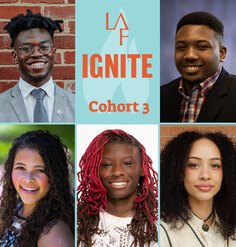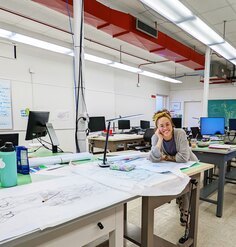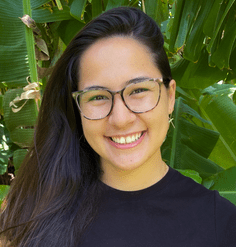Olmsted Scholar Feature: Sustainability and Water Quality, An International Topic
By Leslie Batten, 2010 University Olmsted Scholar
I started the New Year by attending the 7th annual International Conference on Environmental, Cultural, Economic and Social Sustainability held at the University of Waikato, Hamilton, New Zealand. Each day of the three-day conference was filled with an array of presentations that covered both academic and professional work. Attendees and presenters from 28 countries shared their disciplinary theories and practices about how to inspire, and cultivate sustainability on a local scale. The conference was an opportunity to broaden this body of work to the global scale by encouraging collaboration between participants and across disciplines. Some of the diverse topics included: sustainability in the fashion industry, low-carbon technology, migrant mine workers in South Africa, traditional Malay cultural practices as models for sustainability, improving water quality sampling methodology to improve water supply in Israel, Marine Protected Areas in Indonesia, the effects and opportunities for Eco-tourism in Africa, how to teach sustainability, cultural consumption in Slovakia, Chinese Medicine in modern culture, and transit-oriented development in Taipei. The rich, multidisciplinary themes of the conference showcase the breadth of research and professional fields that are currently working towards sustainability, and on a global scale; an encouraging prospect! These topics and many more can be found at the conference website: On Sustainability.
I presented my thesis work through the Green Futures Research and Design Lab at the University of Washington’s Department of Landscape Architecture titled: Waterfront Stormwater Solutions. My thesis focuses on transforming current waterfront stormwater systems that directly convey polluted stormwater without prior treatment into the Puget Sound, a Pacific Northwest icon and home to charismatic orca whales and endangered salmon. Scientists and watershed managers conclude that stormwater is the leading cause of degradation to Puget Sound. The current practice of stormwater treatment often allows entry of a soup of toxins that arise from everyday human land use activities such as oil and gas dripped on pavement, pet waste, fertilizers and pesticides from our lawns and farms (and in some cases greenroofs), heavy metals from cars and industrial pollutants. As a result, aquatic life is devastated, the shellfish industry (a state economic driver) is impaired, and people are told to stay away from the water.
My thesis will continue my current work of addressing such an egregious issue. I will spend the next six months refining alternative design prototypes for local municipalities to collect, clean, cool and harvest stormwater at the water’s edge. I will work to develop alternative end-of-the-pipe systems that incorporate people and wildlife by removing pollutants, restoring habitat for aquatic wildlife, and inviting people to play, relax, learn, enjoy and access their waterfront. I am particularly excited about the multifaceted technical and social aspects required to complete this project. Technical aspects like engineering, hydrology, soil chemistry, horticulture, and marine ecology are paired equally alongside human experience, art, education and recreation. At the end of the thesis process, I intend to develop a toolbox of solutions that other municipalities throughout the region, and perhaps beyond, may use to treat stormwater and to improve their waterfronts, such that outfalls become design opportunities.
Stormwater pollution is not limited to the Puget Sound. It is an international issue as evidenced by presentations at the Sustainability Conference and articles in the associated Sustainability Journal. For instance, the floods in Australia occurred while I was attending the conference. Since then, ongoing flooding has caused a tremendous amount of environmental, social and economic damage over a short period of time. Pollutants washed from urban and rural surfaces into the Coral Sea may greatly impact the Great Barrier Reef, an already sensitive ecosystem. Concurrent with this environmental challenge were presentations from other contexts. Huynh Viet Khai from Kyushu University, Japan reports that water pollution from industrial activities in the upper Me Kong watershed has impacted downstream rice production in Vietnam. It is likely that stormwater runoff is just one of several contributing sources to the Me Kong’s substantial water quality issues. Another presentation by Dr. Yuming Wen of the University of Guam further substantiates that human land use is correlated to water quality with forested and natural areas showing zero to limited impacts. Lastly, Abel Enrique Navarro of New York University presented his research developing a reusable magnetized algae that attracts and removes toxic artificial dyes from water. As a biologically based filtration mechanism, this process might serve well to remove stormwater conveyed contaminants. Several other notable presentations regarding water quality were submitted to the conference and while they did not appear in the final agenda, their work may appear in the conference journal, the Journal of Environmental, Cultural, Economic and Social Sustainability or as a virtual presentation available at the conference website listed above.
During session breaks, I was fortunate to discuss local water issues with attendees from New Zealand. I was impressed on a previous bike tour with all the rainwater cisterns and wanted to commend the Kiwis for their foresight. This proved to be a heated topic. While they relied on large tank systems (cisterns) as opposed to municipal water for their water supply, they do not rely solely on rainwater alone. Rainwater only tops off the tank supply. Instead, Kiwis refill the tanks with a water delivery truck. So far many had already refilled their tanks more than once this summer due to the droughts (and by not adapting their use to sustain the low volumes) at quite an expense. While tanks may be a result of limited municipal infrastructure, it is a feature that can greatly assist efforts to decrease harmful stormwater runoff by intercepting the rain and reusing it. This can also help with water conservation by using rainwater instead of importing freshwater from other sources where withdrawals might be competing with wildlife needs or other natural processes. A greywater recycling system would further reduce water demand and showcase a complete water system.
The bodies of work presented at the conference suggest that it will take a variety of solutions to achieve water quality goals. Until we work outsource control mechanisms to prevent water pollution in the first place, we will need to rely on treatment mechanisms such as Waterfront Stormwater Solutions that will provide additional benefits to wildlife and humans while simultaneously treating stormwater.
The next International Sustainability Conference will be held in Vancouver, BC next January. Maybe I’ll see you there!











